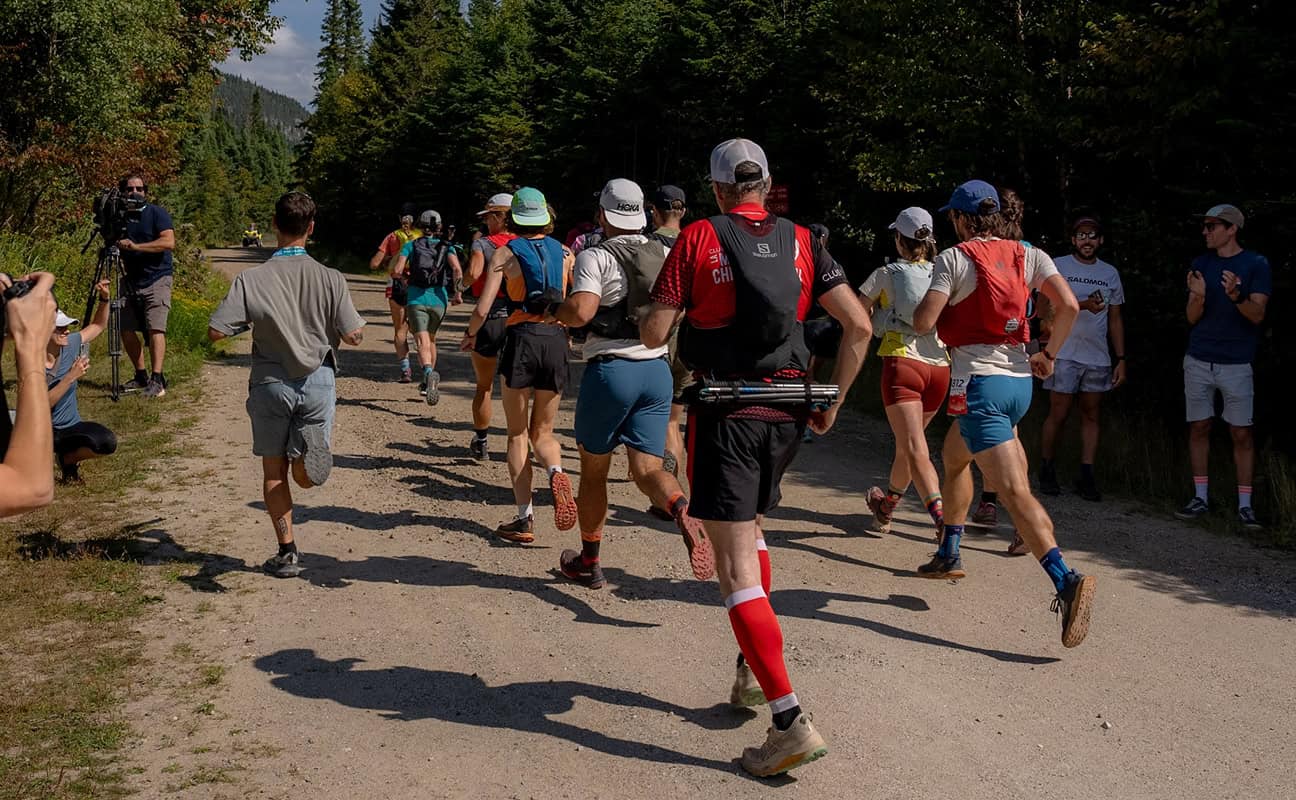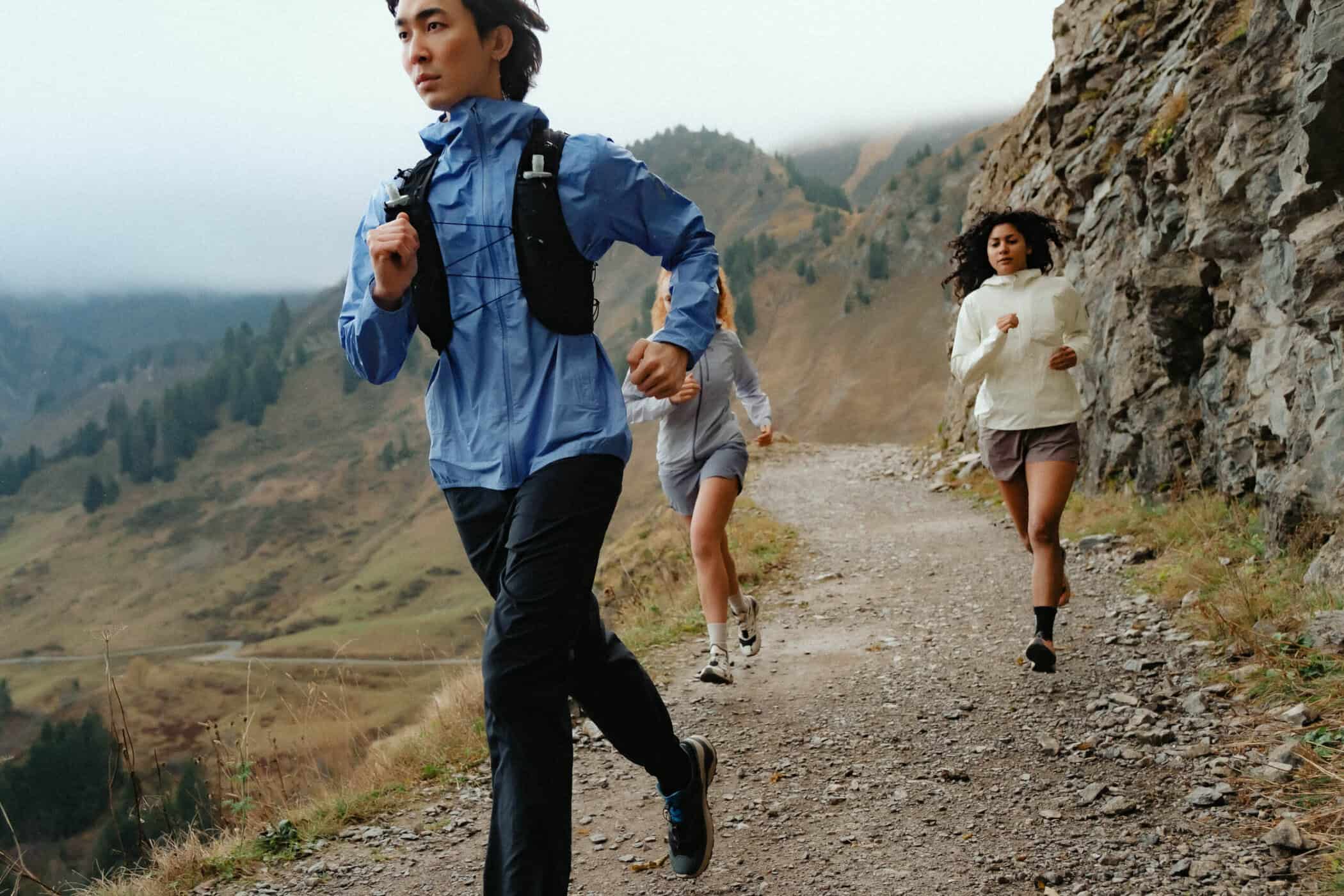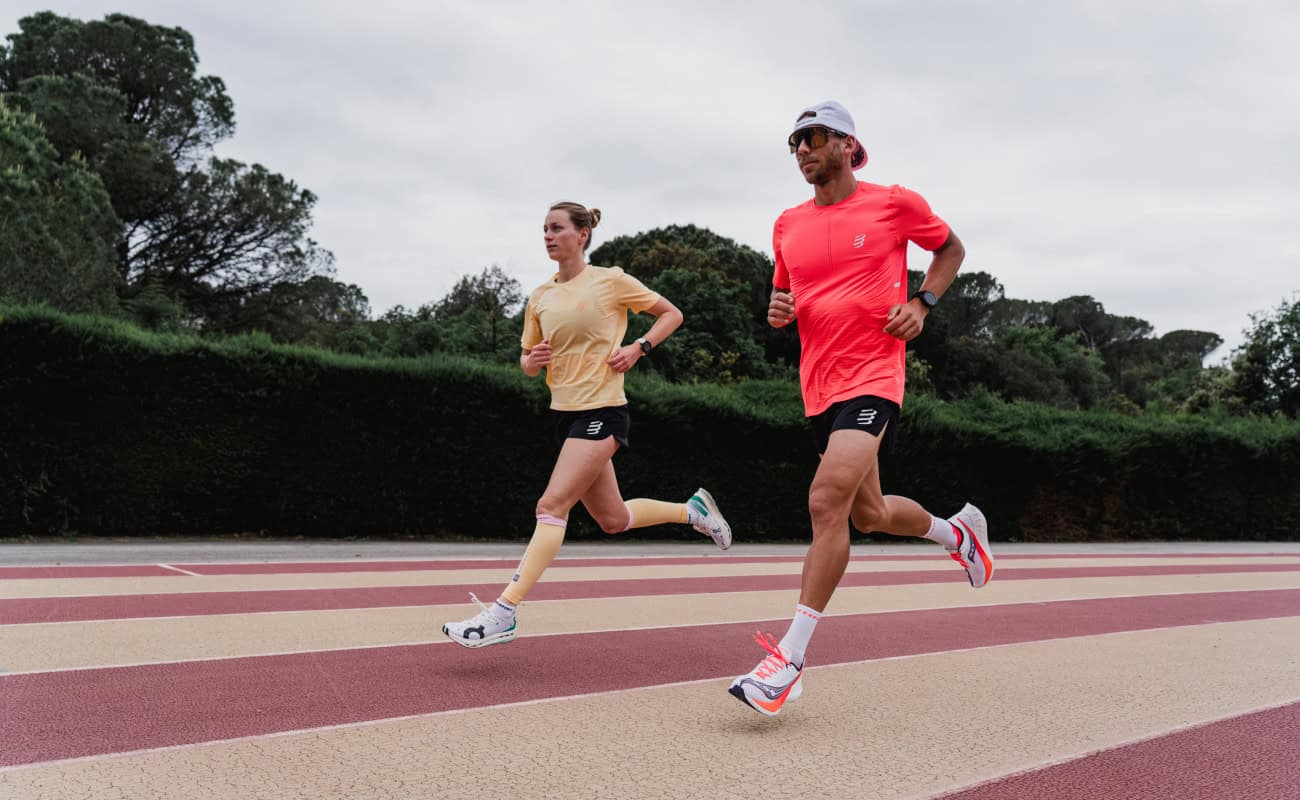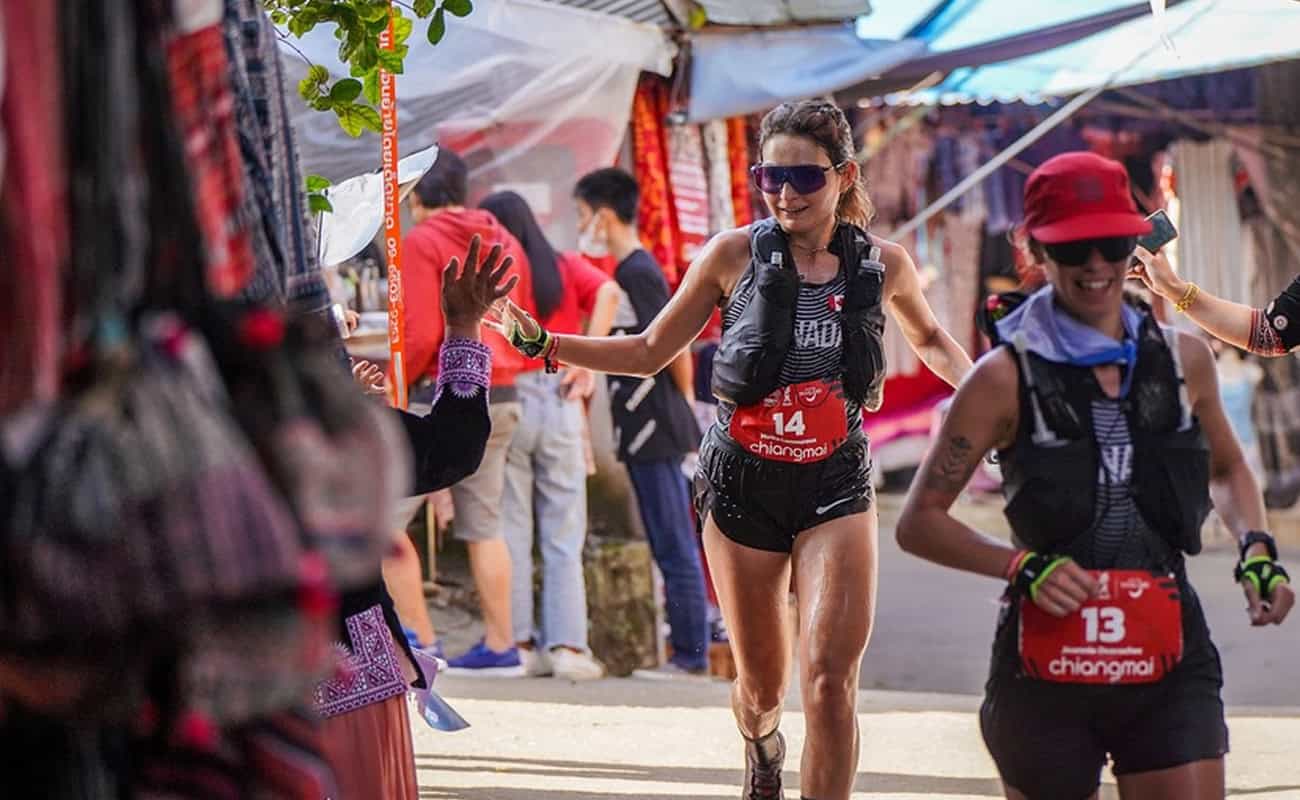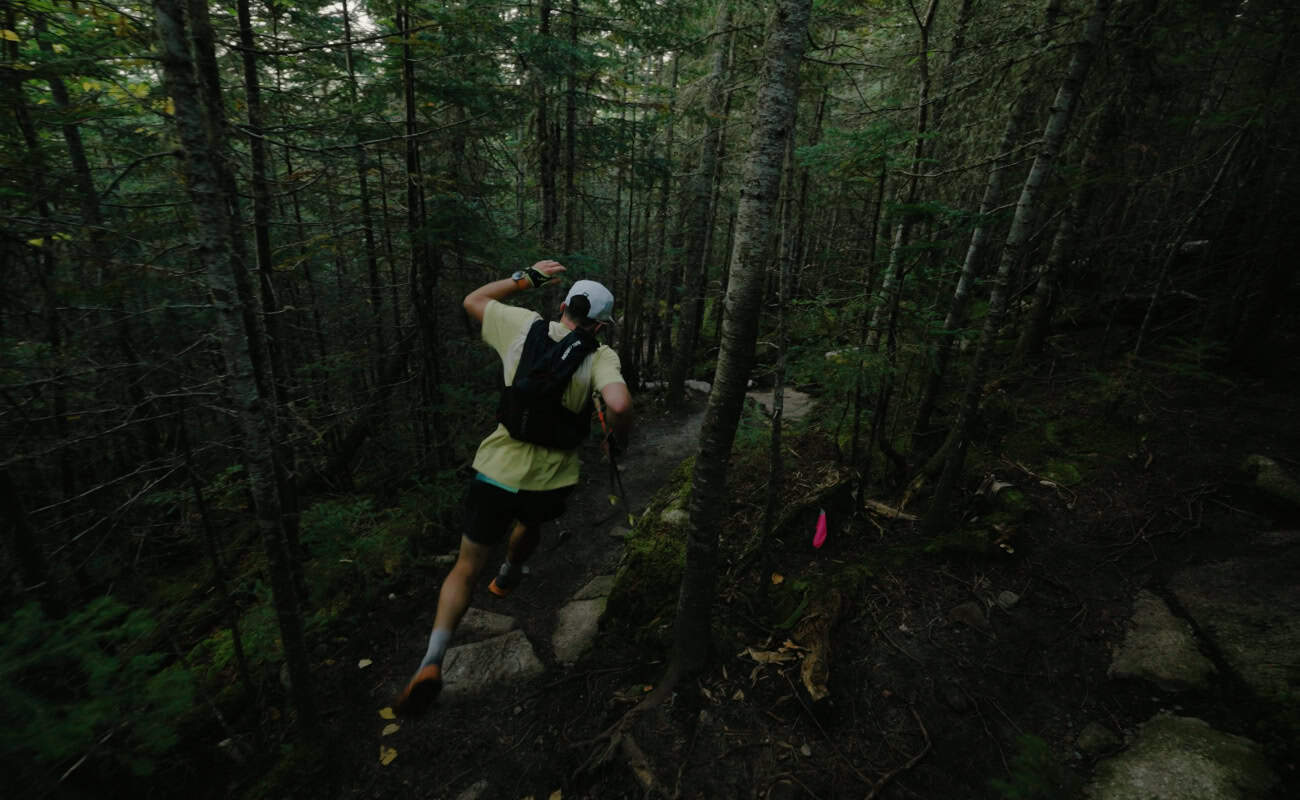Montréal’s cobblestone streets are well-used by city joggers, but trail runners will find plenty to love here, too. Winding through the city’s many parks, woodlands, and riverside paths are dozens of scenic off-road routes. Whether you’re training for an ultra or simply looking to swap pavement for pine needles, you’ll find everything from cruisey river runs to quad-burning climbs. We’ve rounded up the best trail runs around the city below—with expert tips on how to make the most of each route.
What Makes a Great Trail Run?
Ask any trail runner why they hit the dirt, and you’ll get a different answer every time. For some, it’s all about the terrain—rugged and remote, scenic and gentle, rooty and rocky, or dry and dusty. Others care more about the style of the run: some love an out-and-back route, while others seek out single- or multi-loop systems. Some thrive on punishing hill climbs; others plan their entire day around one epic ascent. But personal preferences aside, a great trail run boils down to a few things: a well-marked, easy-to-follow route; solid trail conditions; and helpful amenities like washrooms, water sources, and accessible parking.
Here are some things to consider:
- Trail conditions: Well-maintained trails with minimal mud or overgrowth can mean the difference between a good run and a bushwhack..
- Terrain and elevation: Look for trails that offer multiple distances, along with “bail” options in case that nagging injury flares up. Softer surfaces like dirt are easier on your joints than hard-packed gravel, and rolling elevation changes help build strength without being too gruelling. Tree cover creates shade on hot days, while creeks, lakes, and streams provide abundant, filterable water sources to help you stay hydrated.
- Accessibility: The best trails are the ones you can easily fit into your week—think short drives, reliable transit, or bike access. Even longer weekend runs should get you back before dark.
- Amenities: Trail runners often overlook washrooms, water fountains, and safe parking—but when available, they make for a seamless outing.
- Views: Bonus points for trails with lakes, viewpoints, or ridge-line vistas.
Top Trail-Running Spots Near Montréal
1. Mount Royal Park
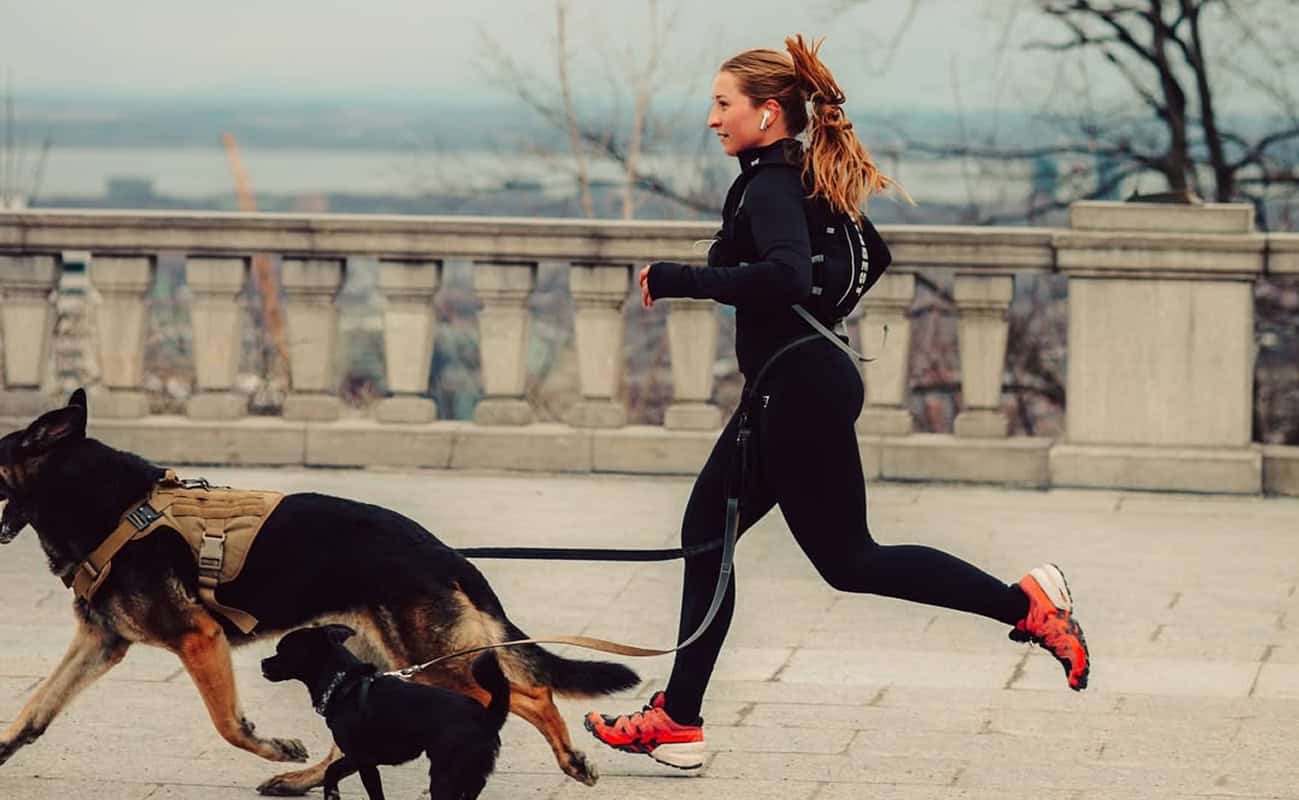
Montréal’s most iconic green space offers 25 kilometres of crushed gravel and dirt trails, with surprisingly steep climbs over three hills—ideal for elevation gains close to home. You can tackle the 700-foot summit a few ways, including conquering all 339 steps of the infamous, thigh-burning Peel Street stairs, or stick to the gentle grade around Beaver Lake for an easy loop with scenic views. (Bonus: refuel with snacks, water, or a coffee at the Café des Amis in the Beaver Lake Pavilion.) Early mornings are best to beat the crowds, especially on weekends.
- Difficulty: Both the nearly nine-kilometre Mount Royal Park Loop and the 11-kilometre multi-use Olmsted Road route are rated as moderately challenging, while the one-kilometre loop around Beaver Lake features a mere four metres of elevation gain.
- Best for: Short lunchtime runs, hill training, and after-work sunset jogs.
- Amenities: Paid parking is available on-site, but keep in mind this is Montréal’s—and one of Canada’s—most popular parks. Expect heavy traffic if you’re planning to drive, or opt for public transit. Washrooms are located throughout the park.
2. Cap-Saint-Jacques Nature Park
Located at the western tip of the island, this 330-hectare nature reserve is the largest urban park in Montréal, with over 10 kilometres of trails winding through fields, wetlands, and maple forests. Bordered by Lac des Deux Montagnes and Rivière des Prairies, the park is home to a diverse array of flora and fauna, an organic farm (where you can snag a mid-run snack), and a sandy beach—perfect for a post-run swim. The trails are mostly flat, making them ideal for beginner runners or those looking for a taper day with minimal elevation gain. Spring and fall offer the best footing and the fewest bugs.
- Difficulty: All trails in the park range from five to eight kilometres and are rated easy.
- Best for: Easy, quiet loops through nature.
- Amenities: The park is easily accessible by public transit and also offers paid parking on-site. Accessible washroom facilities near Château Gohier are a bonus.
3. Jean Drapeau Park
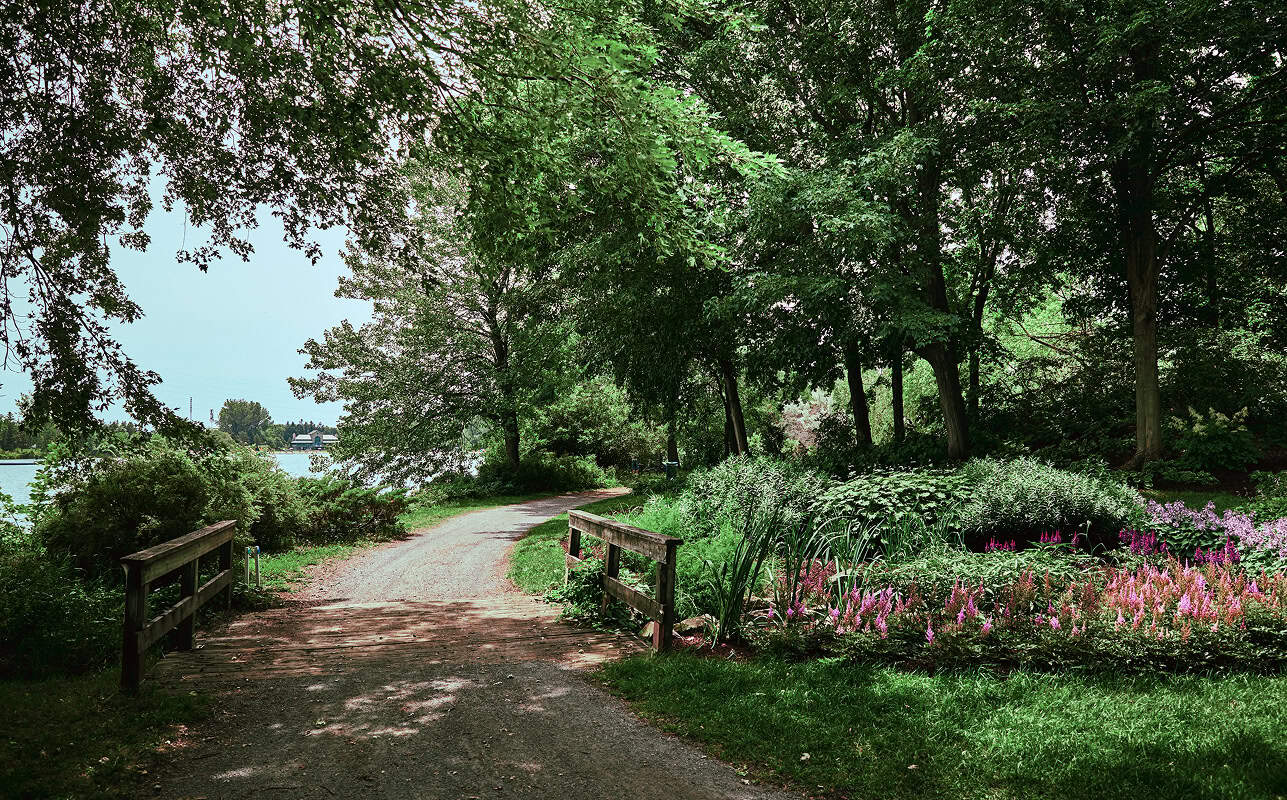
Spanning two islands along the St. Lawrence River, Parc Jean-Drapeau is best known as the former site of Expo 67 and the current home of the Montréal Marathon every spring. While urban in scale, the park’s 25 kilometres of multi-use paths offer trail runners a picturesque nature escape—with bonus views of Montréal’s skyline. The nearly ten-kilometre Randonnée Source Bleue hugs the contours of Île Sainte-Hélène and Île Notre-Dame, while the ten-and-a-half-kilometre Sainte-Hélène Island loop winds past manicured gardens. Keep in mind the park can get busy with cyclists—early mornings or weekdays are ideal.
- Difficulty: Two ten-kilometre, moderately challenging routes with light elevation gains.
- Best for: Urban runners craving a dose of nature.
- Amenities: Lots—this vibrant cultural hub also features an open-air amphitheatre, the Biosphère, a public beach, three heated outdoor pools, La Ronde amusement park, two museums, Le Casino de Montréal, public artwork, and more.
4. Ouareau Forest Regional Park

For more experienced trail runners, Forêt Ouareau offers rugged, backcountry-style routes. The Massif sector features some of the most rewarding climbs, with lookouts offering panoramic views. Trail markings can be inconsistent—download a map or bring a GPS-enabled navigation device. Pack extra snacks, water, and a light jacket; conditions can shift quickly at higher elevations.
- Difficulty: The park’s 22 routes vary in distance, terrain, and elevation gain. The popular Summit Trail is a nearly seven-kilometre loop that begins with a sharp ascent and includes several scenic viewpoints.
- Best for: Technical trails and weekend long runs.
- Amenities: Washrooms and picnic tables are available.
5. Mont-Saint-Bruno National Park
Located just thirty minutes from downtown Montréal, Mont-Saint-Bruno is one of the most accessible Sépaq parks. It features a 27-kilometre network of trails that circle five lakes: Lac Seigneurial, Lac des Bouleaux, Lac des Atocas, Lac du Moulin, and Lac de la Tortue. It’s ideal for intermediate runners seeking a mix of flats and rolling terrain. There is an entry fee, but it’s worth it for the clean facilities and clear signage. Springtime brings bursts of wildflowers to the area—keep an eye out!
- Difficulty: L’Hermine Trail is the park’s easiest at just over three kilometres, while the Boucle des 3 Lacs is a 12-kilometre loop with double the elevation.
- Best for: Well-maintained trails in a peaceful, lakeside setting
- Amenities: Accessible-friendly washrooms and picnic areas, along with a nature store and gear shop where you can rent a SUP or canoe for a post-run paddle. Refuel with drinks and pastries at the park’s Le Vieux Moulin tea room.
6. Mont-Saint-Hilaire
Mont-Saint-Hilaire is home to McGill University’s Gault Nature Reserve—a nature park and research station that protects more than 1,000 hectares of natural habitat. Over 25 kilometres of trails wind through this biosphere reserve, including the quad-burning Dieppe Trail, which rewards with sweeping views of the Richelieu Valley, and the Grand Tour of Mont St-Hilaire—a 12-kilometre loop that tops out at 500 metres of elevation and leads to epic viewpoints and the dramatic Dieppe cliffs.
- Difficulty: This mountainous area features a handful of moderate trails ranging from five to 15 kilometres in length. Be prepared for rocky terrain and steep switchbacks—this is a great training ground for your next race.
- Best for: Challenging climbs and epic views.
- Amenities: The reserve’s welcome centre has washrooms and an observation tower. The biosphere reserve limits daily entries to preserve the ecosystem, so it’s best to book in advance. Pack plenty of water and your own snacks.
How to Practice Good Trail Etiquette
Trail running is all about enjoying nature—but that comes with responsibility. Respecting the trails, fellow users, and wildlife helps keep these wild spaces stay wild for everyone. A few simple rules go a long way: yield to hikers and uphill traffic, give a friendly heads-up when passing, and stick to marked paths—even when they’re muddy (that’s what good trail running shoes are for). Keep noise to a minimum and leave no trace—and yes, that includes gel wrappers and banana peels.
Trail Map Resources & Apps to Use
Even on familiar trails, it’s smart to plan ahead. GPS-based apps and running watches can help you navigate, track your stats, and stay safe—especially when cell service drops off. AllTrails is a go-to for user reviews, elevation profiles, and route tracking, while Gaia GPS is ideal for backcountry routes and offline navigation. Quebec-based Ondago offers downloadable maps for Sépaq parks, and Strava lets you log (and brag about) your pace. No matter your tech of choice, always download your route before heading out.
You don’t need to head far to get a great trail run in—Montréal and its surrounding regions are full of routes that challenge and inspire. So, lace up your running shoes, bring your reusable water bottle, and get out there. Ready to gear up? Shop running apparel or learn more about the best running apparel brands.



